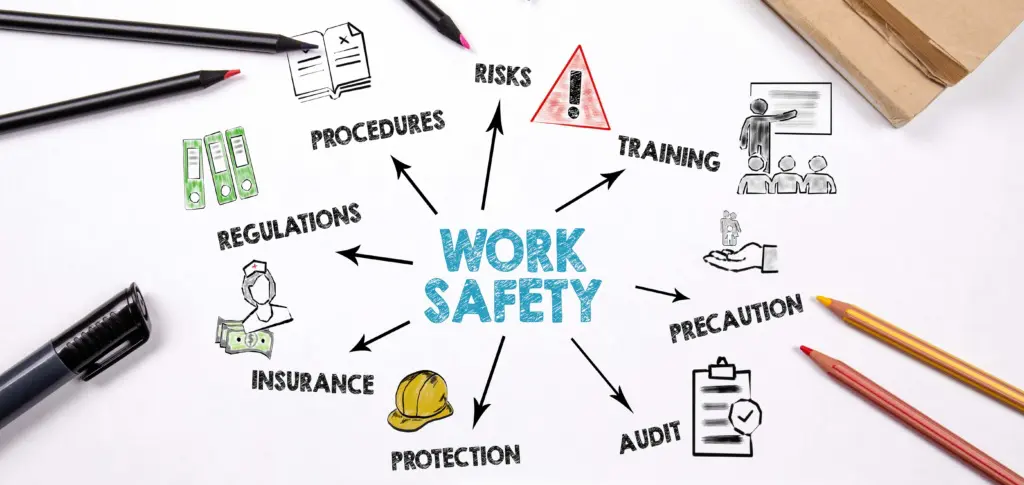HR Challenges in Offering Workplace Safety Training in Canada

HR Challenges in Offering Workplace Safety Training in Canada:
In Canadian workplaces, ensuring the safety and well-being of employees is a top priority for employers. Workplace safety training plays a critical role in equipping employees with the knowledge, skills, and resources to prevent accidents, injuries, and hazards in the workplace. However, offering effective safety training programs can present various challenges for HR professionals. In this article, we will explore the key HR challenges associated with offering workplace safety training in Canada and discuss strategies to overcome these challenges effectively.
- Regulatory Compliance:
- One of the primary challenges HR professionals face is ensuring compliance with federal, provincial, and territorial regulations governing workplace safety training. Canadian jurisdictions have specific legislative requirements regarding the type, frequency, and content of safety training programs, which can vary depending on the industry, workplace hazards, and employee roles.
- To address this challenge, HR professionals must stay abreast of relevant legislation, standards, and regulatory updates to ensure that safety training programs meet or exceed legal requirements. Collaborating with regulatory agencies, industry associations, and legal counsel can help HR professionals navigate complex regulatory frameworks effectively.
- Tailoring Training to Diverse Workforces:
- Canadian workplaces are increasingly diverse, with employees from different backgrounds, languages, and levels of education. Tailoring safety training programs to meet the needs of diverse workforces can be a significant challenge for HR professionals.
- To overcome this challenge, HR professionals should consider incorporating multiple training modalities, such as online courses, in-person workshops, and multilingual materials, to accommodate different learning styles and language preferences. Additionally, providing culturally sensitive training content and engaging employees in the development process can enhance the relevance and effectiveness of safety training programs.
- Budgetary Constraints:
- Budgetary constraints often pose a challenge for HR professionals tasked with offering workplace safety training programs. Allocating sufficient resources for training materials, instructor fees, technology infrastructure, and administrative costs can strain organizational budgets, particularly for small and medium-sized enterprises (SMEs).
- HR professionals can address budgetary constraints by exploring cost-effective training solutions, such as leveraging free or low-cost online resources, partnering with industry associations or educational institutions, and negotiating bulk discounts with training providers. Additionally, demonstrating the return on investment (ROI) of safety training programs in terms of reduced accident rates, insurance premiums, and productivity gains can help secure funding from senior management.
- Engaging Employees:
- Employee engagement is essential for the success of workplace safety training programs. However, HR professionals often encounter challenges in motivating employees to participate actively in training activities, especially if they perceive safety training as tedious or irrelevant to their job roles.
- To enhance employee engagement, HR professionals should emphasize the practical relevance of safety training by linking it to employees’ daily tasks, job responsibilities, and personal safety goals. Using interactive training methods, such as simulations, case studies, and hands-on exercises, can also increase employee engagement and retention of key safety concepts.
- Assessing Training Effectiveness:
- Evaluating the effectiveness of workplace safety training programs is crucial for identifying areas of improvement and ensuring ongoing compliance with regulatory requirements. However, HR professionals may encounter challenges in measuring training outcomes, assessing employee competency levels, and tracking the impact of training on safety performance metrics.
- To overcome this challenge, HR professionals should implement robust evaluation strategies, such as pre- and post-training assessments, skills demonstrations, and on-the-job observations. Collecting feedback from employees, supervisors, and safety committee members can also provide valuable insights into the effectiveness of training programs and areas for improvement.
Offering workplace safety training in Canada presents various challenges for HR professionals, including regulatory compliance, tailoring training to diverse workforces, budgetary constraints, engaging employees, and assessing training effectiveness. However, by adopting proactive strategies and leveraging available resources, HR professionals can overcome these challenges and develop effective safety training programs that enhance employee safety, well-being, and organizational performance. By prioritizing workplace safety and investing in comprehensive training initiatives, Canadian employers can create safer, healthier, and more productive workplaces for all employees.
Categories
- Aerial Lift
- ATV Training
- Bear Awareness
- Chainsaw Training
- Confined Space
- Defensive Driving
- Forklift Training
- Lockout Tagout
- Online Safety Training
- Overhead Crane
- Pipeline Construction Safety Training
- Propane Handling
- Safety Training Benefits
- Scissor Lift
- Skid Steer Training
- Space Awareness
- TDG
- Telehandler Forklift
- Traffic Control
- Train the Trainer course
- Training Course
- Uncategorized
- WHMIS
- Workplace Harassment and Violence Preventiont
